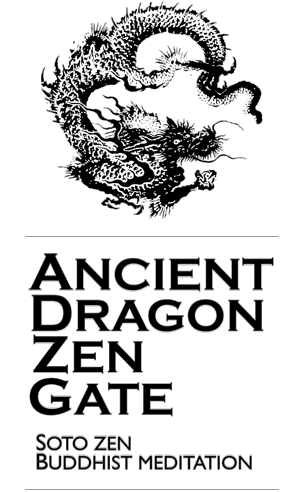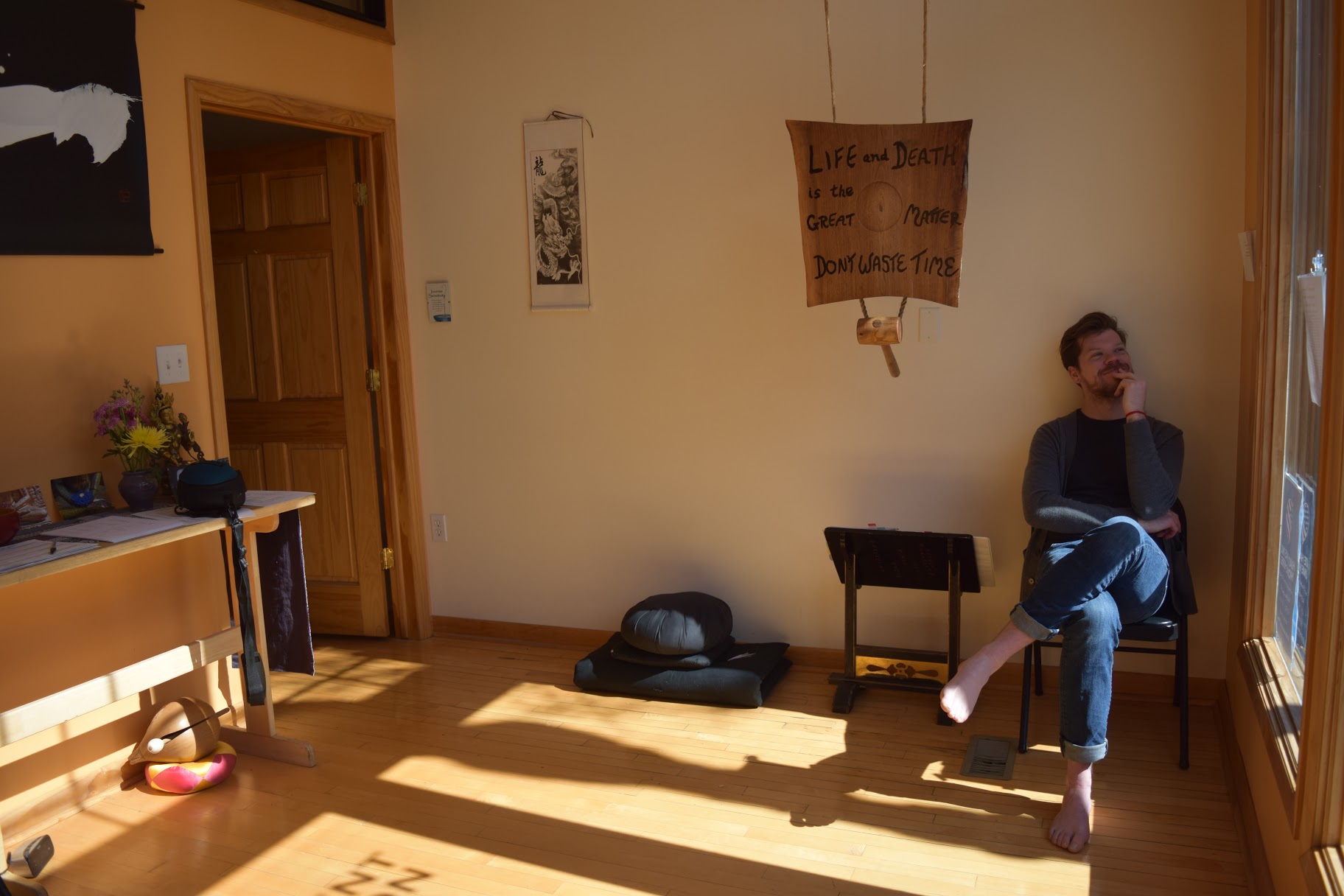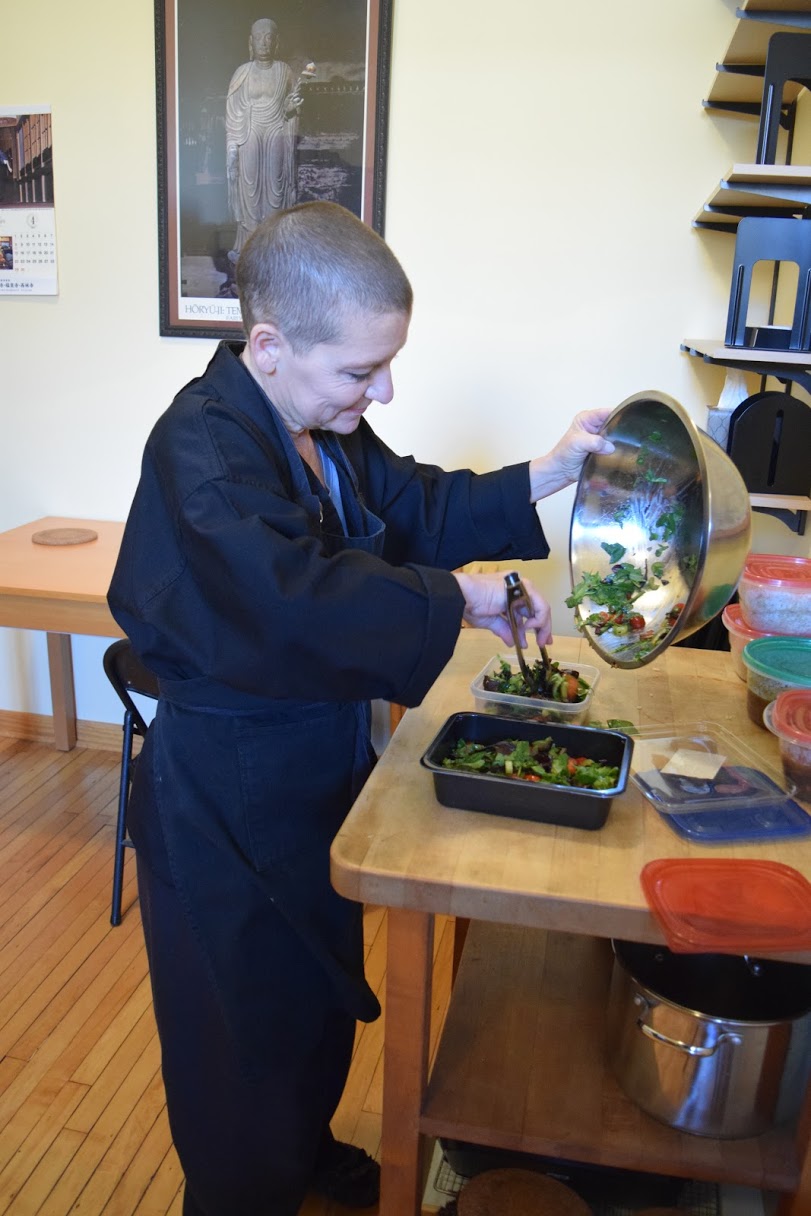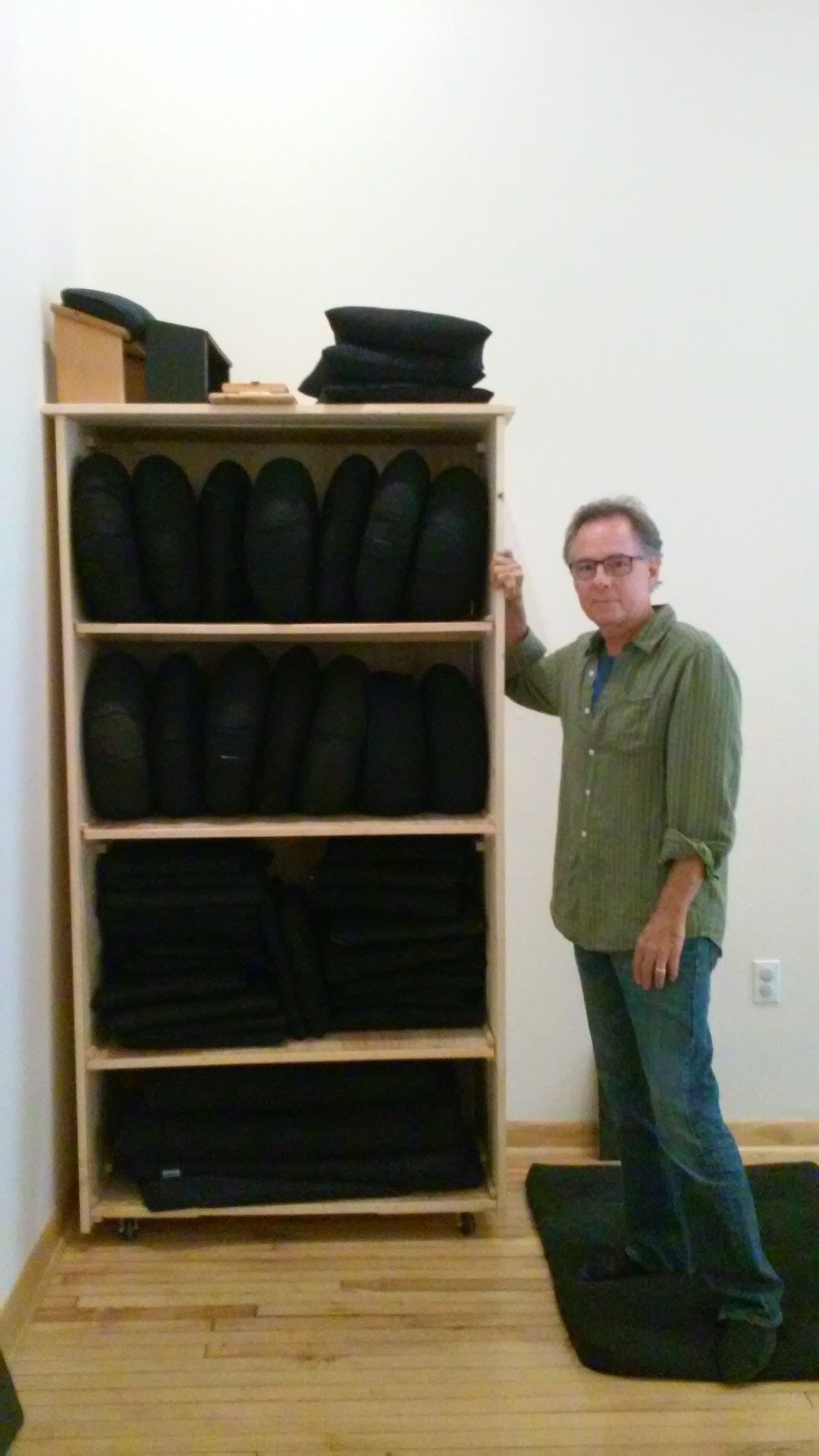
Temple Practice Positions
Zen Practice extends to all aspects of our daily life. At Ancient Dragon Zen Gate, we offer ways to practice together to care for our temple and community.
Meditation Hall Practice: the Doanryo
“Buddhism is transmitted from warm hand to warm hand.”
– Shunryu Suzuki Roshi
Every meditation period and each meditation hall (zendo) event at Ancient Dragon relies on the participation of a dedicated group of practitioners called the doanryo. The volunteers on the doanryo have been trained in the ceremonial roles of our temple known as Greeter, Doan, and Kokyo. Performing these important tasks is an essential part of their own Zen practice, an expression of meditative awareness and a gift of service to our community.
All regular attendees at Ancient Dragon are invited to volunteer to train in one or more of these jobs by talking to our Guiding Teacher and the Ino (zendo manager). The doanryo is managed by the Ino and their assistant (Head Doan), who together guide and train the doanryo.
The Greeter welcomes each person entering the temple and maintains a friendly, orderly atmosphere in the vestibule, answers questions from newcomers and strikes the han (wooden block) to announce when zazen will begin. The Doan keeps time for each period of zazen and kinhin (walking meditation), and rings bells during services. The doan also cares for the altar, a practice that incudes setting out incense, lighting charcoal, replacing faded flowers, trimming candles and sifting incenseash. The Kokyo is the chant leader who announces and leads chants during services and invokes the dedication (eko). Members of the doanryo can be trained to play the mokugyo (wooden fish drum) during service to keep the beat during some chants.
Enacting these forms of practice, heart, mind, and body harmonize and bring harmony to our place of practice. Ringing bells signaling meditation periods or arranging cushions and chairs are activities of meditation. Serving on the doanryo is a wonderful way to deepen practice through awareness of the many beautiful details of our practice of Soto Zen temple forms and an opportunity to become more involved with the community of our temple.
Kitchen Practice
“Innumerable beings have brought us this food.
We should know how it comes to us.”
– Zen meal verse
Preparing, serving, and receiving food is a daily, accessible practice for the cultivation of mindfulness, generosity and loving-kindness in our everyday life and at our temple. In the kitchen, our meditative awareness extends beyond the cushion to everyday activity as we wholeheartedly work together to nourish our lives to affirm the deep connection between giver, receiver and gift.
The Tenzo (Head of the Kitchen) is the temple administrator who guides the provision of meals and tea. Everyone is welcome to join kitchen practice as a volunteer to assist with food preparation for tea or meals in consultation with the Tenzo. Other opportunities to engage in kitchen practice include serving tea, formal serving of meals at retreats, and formally receiving meals (oryoki-style) during retreats. Whether serving tea treats or preparing vegetarian meals for long meditation retreats, the offering of food serves the community as a whole. Cooking rice and chopping vegetables are the concentrated activities of Buddha’s awareness.
Kitchen practice offers a wonderful opportunity to bring meditative awareness to tending to our essential needs as human beings, which enables spirituality to blossom.
Work Practice
Standing or walking,
sitting or lying down,
during all our waking hours
let us practice the Way with gratitudeHow could we use our work only as a means
to get somewhere along the road?
May our efforts express awakening;
may they benefit all beings– Adapted from the Metta Sutta and Dogen Zenji, Pure Standards for the Zen Community
The Work Leader is the temple officer who guides opportunities to wholeheartedly engage in Zen practice through the activity of physical work. This practice in community is partly about shared effort and the rewards of accomplishment. But it is not only “used as a means to get somewhere along the road.” Just like zazen, work is done for its own sake: it is a practice that manifests awakening.
For a brief work period (known as soji) on Sundays between our dharma discussion and informal conversation over tea, all are invited to help clean the temple. Guided by the Work Leader, we begin by lighting incense and making bows to an altar in the kitchen. We offer our effort for the benefit of all beings. We work in silence, focusing on the physical task at hand, watching the mind as thoughts arise, then returning to the fullness of the moment as dust is swept, toilet bowls are made clean, and the body stretches, stoops, and stands again. All the while the breath goes in and out, and we rub elbows with one another.
Everyone is welcome to join work practice on Sunday mornings and on an annual Spring Cleaning day. From time to time, some may also partner with the Work Leader by designing and building shelves, repairing doors, painting walls, shopping for supplies, or meeting with a plumber who comes to fix a pipe. While the Work Leader is responsible for planning and coordinating all this, many others share in the privilege of caring for our practice home. Bringing zazen and activity together, we carry this awakening into the busyness of our daily lives.



